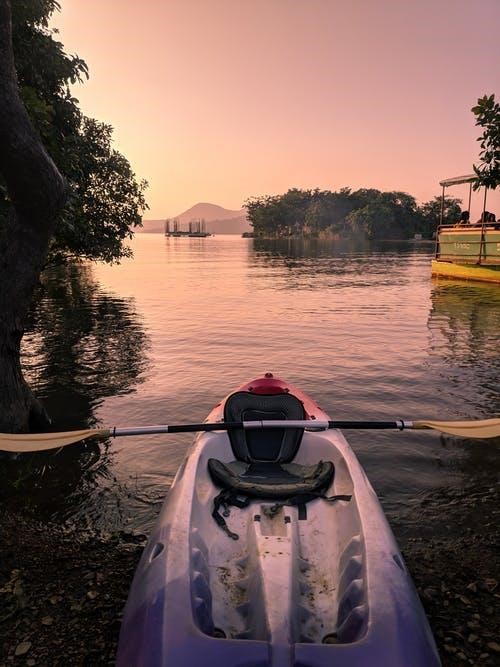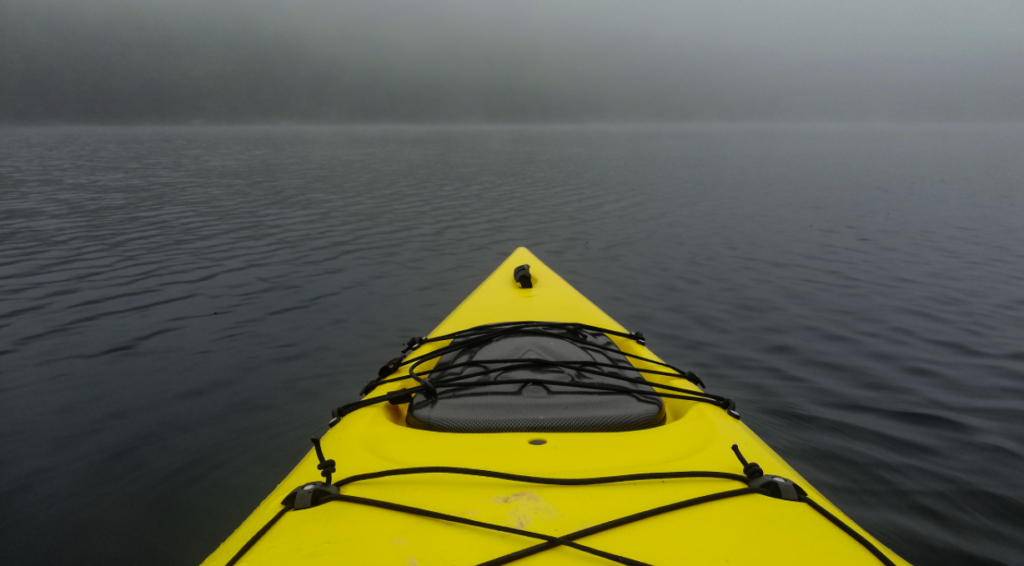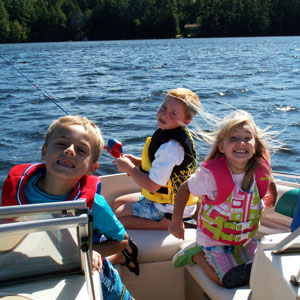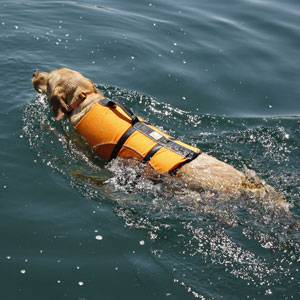When most people think of the outdoors, the first thing that comes to mind is seeing a kayak seamlessly glide across the water with its bow cutting through the mist. If you are the type of person who loves water sports but has no idea how to begin, this guide on how to kayak for beginners is especially for you.
All you need is a bit of preparation, a kayak, and this guide — and before you know it, you’ll be out there in the water having your own kayaking adventure.
If you are just getting into kayaking, you might not want to immediately purchase a kayak, even though it’s an option. Consider other ways you can get a kayak, such as:
Table of Contents
Renting a Kayak
To do this, simply head over to any boat renting service on the water, so you don’t have to worry about the additional hassle of transporting the kayak. You should note that you are likely to get minimum instruction and gear, but it is a great way to learn how to kayak.
Borrow a Kayak From a Friend
Doing this can be advantageous if your friend is an expert kayaker. They can teach you the fundamentals of kayaking.
Sign up for an Introductory Class
Taking a class provides you with detailed instructions. This makes it one of the best plans if you are interested in taking up kayaking.
Sign Up for a Tour
This method provides you with the fundamentals, gear, and, of course, a kayak. There are various places you can take tours, such as an adventure touring company or a park department in your vicinity.
How to Kayak for Beginners: Appropriate Clothing and Gear
For the rest of this article, let us assume that you are interested in getting a classic kayak or already have one. A classic recreational kayak in this regard has a cockpit and two hatches for gear storage. That said, you should note that there are many kayaks available, including inflatable kayaks, fishing kayaks, tandem kayaks, and sea kayaks.
Before we get into detailed instructions, let’s quickly consider the appropriate clothing and gear for kayaking. If you are renting a kayak or signing up for a class or a tour, you should get the following:
- Bilge pump
- Size-appropriate paddle
- Spray skirt for rough waters
- A personal floatation device like a life jacket
When kayaking, you should wear appropriate warm weather clothing such as:
- Long or short sleeve rash guard top, preferably non-cotton
- Nonbinding and non-cotton shorts or swimwear
- Neoprene footwear
- Lightweight fleece vest or jacket, depending on the weather
- A sun-shielding hat
- Rain jacket and pants, depending on the weather
- If the water is colder than 60oF, a wetsuit is necessary
Personal items to bring along:
- Enough water
- Snacks to provide energy and/or lunch for longer distances
- Signaling whistle
- First aid kit
- Sunscreen, sunglasses, and lip balm
- Dry bags to make sure your personal belonging don’t get wet
- A headlamp, especially useful for long tours into the evening
- A watch
How to Kayak for Beginners: Adjusting Your Kayak
A properly adjusted kayak is not only comfortable to paddle but is more stable. When adjusting your kayak, do the adjustment on dry land. Additionally, every beginner kayaker should consider three contact points:
- First, sit in the cockpit. If the kayak lets you change the setback or seat angle, do so to the point where you are comfortable. For power and balance, you want to be more upright.
- Touch the footpegs with the balls of your feet. Your knees should have a slight bend. Most footpegs can be adjusted by first tilting them and then sliding them along a track to a preset stopping point. The most effective way to slide the pegs is to first get out of the kayak.
- Make sure that when you bend your knees, they are firmly in contact with both sides of the cockpit. This position allows you to control the side-to-side motion. While the aim is to be snug, you should be tightly packed in so you can get out if the kayak capsizes.
How to Kayak for Beginners: Safety Precautions to Remember
Whenever you head out to the water, you should always have essential clothing and gear with you. Some other safety measures you should be aware of when you are out on your own are:
- Always have a paddling buddy. This is especially important when you don’t have a guide to go with you. It is always best to have an experienced paddler with you that can offer assistance when necessary.
- Make sure you and your paddling buddy always remain within earshot and you can see them at all times during your time on the water. Know your limit when it comes to distance. If you haven’t had any rescue training, you shouldn’t paddle farther from the shore than you can swim.
- Always conduct hazard research. Doing so requires you to ask a knowledgeable paddler about tides, currents, weather forecasts, and places you should avoid. Find out what the weather temperature is. Taking this into consideration means that you should always dress for a possible boat mishap. In other words, you should have a wetsuit on if the water temperature is less than 60o.
- Ensure that the personal floatation device is fitted tightly for you kayaking adventure. It should only be loose enough not to interfere with your breathing. If the weather temperature increases and you need to get rid of a layer of cloth, always paddle to shore first. You should never remove your life jacket while on the water.
How to Kayak for Beginners: Basic Kayak Strokes
There are various skills to think about when you want to learn how to kayak. Two important skills are navigation and strokes.
Forward Stroke
The forward stroke is the one you will do most of the time you kayak, so it is important to learn the technique. The main aim is to immerse your blade into the water on one side of the kayak while winding your torso.
The next step is to rotate your midsection as the blades move behind you. You should follow through with your eyes and move your torso at the same time. The focus should be on pushing the shaft with your upper hand as you move.
When your hand gets behind your hips, slice the blade out of the water, and release it, starting the process over again.
Reverse Stroke
The reverse stroke is a great way to brake and slow down a kayak. It can also take you backward if the kayak has already stopped.
The reverse stroke is the exact opposite of what you would do in a forward stroke. All you have to do is fully place the blade into the water right next to your hip. Next, push using your lower hand. Slice the blade out of the water, once the blade gets near your feet.
How to Kayak for Beginners: Holding Your Kayak Paddle
To hold your paddle correctly, you first have to grasp the paddle with both hands and center the shaft right on your head. Bend your elbows at a 90-degree angle, so you know your hands are in the correct starting position.
Next, lower your paddle and orient it to do the following:
The paddle blades have to be in line with each other. If you realize that your blades are offset, it could be that your paddle is feathered. To fix this, adjust your paddle by using the twist or push-button setting located at the center of the shaft. While feathered blades can help you cut through the wind better, they are a bit tricky to use for most first-timers.
Looking at the paddle blade, make sure that the longer blade edge is at the top. Doing this ensures that your blades are not only in the correct position but are also able to move efficiently and smoothly through the water. If your blades are uniformly shaped, you can have either side up.
The scooped sides of the paddle blade should be facing you, which might be a little difficult as the curvature of the blade is subtle.
The next step is to put your knuckles above the paddle shaft, lining them up with the top of the blades.
You don’t want to grip the paddle too tightly, as doing this may cause your hands to get tired rather quickly. You want to make an O-shape using your index finger and your thumb before resting the rest of your fingers onto the shaft.

How to Kayak for Beginners: Launching a Kayak
A trip on a kayak typically begins with launching off from a sloping shoreline. When doing this, you have to make sure that you do not drag the bottom of the kayak on cement, sandy, or rocky surfaces.
Here’s how to launch a kayak for the first couple of times:
- First, have a friend assist you with carrying the kayak to your launch point. Place the kayak in shallow water, perpendicular to the shoreline. A parallel launch might be better if you have a long kayak, or you are launching into the river. To remain perpendicular, the stern should be close to shore while the bow faces away from shore.
- Place a paddle blade under the deck line just right in front of the cockpit.
- Straddle the cockpit while standing over your kayak.
- Grab the cockpit and then sit in the cockpit.
- Next, lift both legs and slide them into the cockpit.
- Move as far back as you can until you are comfortable and your feet rest on the footpegs.
- Get your paddle and use it to circumvent any incoming boat wakes and waves. If you have a spray skirt, you can attach it.
Getting out of your kayak is simple. You just have to paddle into a launch position and reverse the steps you took to get into it until you straddle the kayak.
How to Kayak for Beginners: Using Skegs and Rudders
If your kayak has a rudder, it should sit at the back. To operate it, you need to use your foot pedals. You can control the rudder to move the kayak left or right. Place your leg on the right pedal to turn right or put your left leg on the pedals if you want to turn left.
A skeg is an omnidirectional fin that drops down from the hull. The skeg is generally used to assist with tracking, meaning it makes sure your kayak moves straight, particularly in windy conditions.
Most newbies use skegs and rudders incorrectly. They even forget to pull them up in shallow water, which can cause damage, which is why it is best to go without them. Choosing to paddle without a rudder forces you to get better at proper paddling technique faster.
Additionally, if you are out on the water when it’s so windy that you need a rudder or a skeg, you shouldn’t be doing so without having an experienced guide explain how to correctly use them.
Bottom Line
Remember, always select a calm, small body of water when starting out. The best water sites are ponds or lakes with little powerboat traffic. The best launch site for kayakers is always a gently sloping sandy beach, as rocky shorelines are a lot more challenging.
Always try to go on a sunny day, as it can help you keep your comfort level high while lowering any complications.



